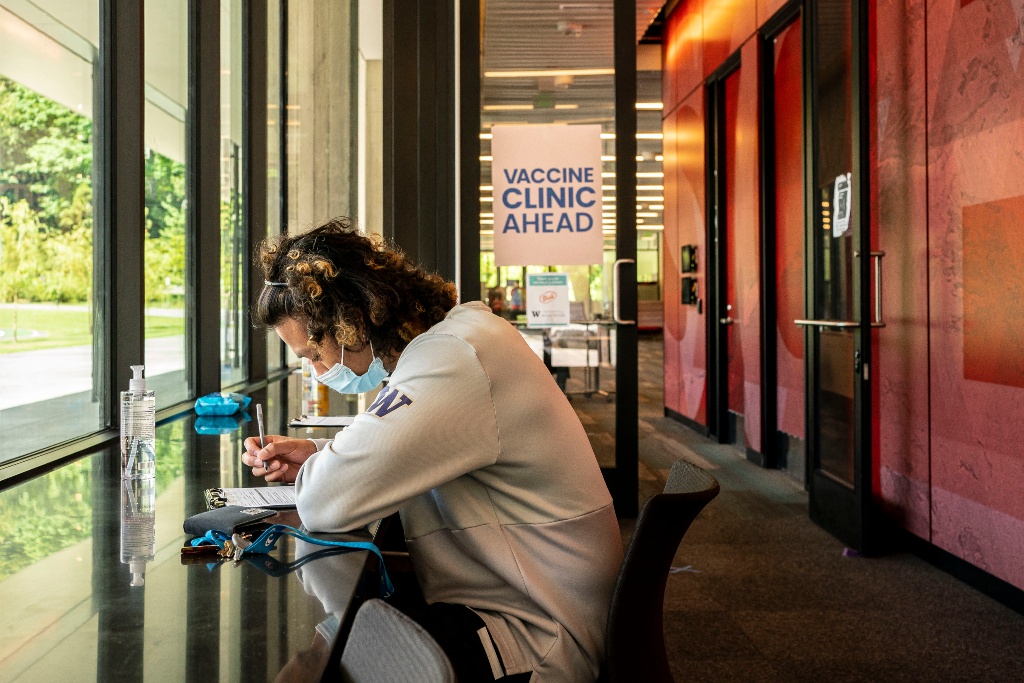
The transition to university or college is an exciting time for many young adults, but it can also be demanding and stressful. Young adults living with complex health conditions may face unique challenges with this transition.
As health care providers with experience in chronic disease management, we explain what underlies some of these challenges and provide strategies to manage them.

Connect with relevant services at your school, including campus health services. Source: David Ryder /Getty Images North America/ Getty Images/AFP
Understanding the challenge
Many young adults transition to post-secondary at or around the same time they are transitioning from pediatric to adult health care. This transition itself can be difficult as adult care is often less centralised, involves different health care providers and expects a higher level of independence.
Yet, at the same time, young adults are only beginning to refine their self-government, autonomy and life skills, such as decision-making, goal-setting and crisis management.
General recommendations for people with chronic conditions include having self-management strategies like stable routines, a strong social support network and an established circle of care. However, many aspects of the post-secondary experience are not conducive to these healthy behaviours.
Starting university or college may involve moving cities or provinces away from family, friends and other social supports. Inconsistent class schedules and evening events may make routines like consistent sleeping and healthy eating challenging.
Classes are often longer and require sustained attention, which may be especially difficult for those with fatigue or difficulties concentrating. Evaluation and grading systems based on a few high-stakes exams or papers may be challenging for those with fluctuating abilities.
The transition to post-secondary education may also be accompanied by changing role expectations. These could include commuting, navigating relationships with roommates, meal preparation and paid work.
Managing a chronic health condition can make all of those transitions more complex. Here are five tips for students starting post-secondary education with complex medical needs.

When transitioning to adult care, patients are expected to have a higher level of independence. Source: Brandon Bell/Getty Images North America/ Getty Images/AFP
5 things you can do to prepare
- Connect with relevant services at your school. This includes introducing yourself to health resources in your new space such as campus mental health services or campus health care to ensure you have a doctor nearby. Have a clear understanding of your health insurance coverage (for example, for things like counselling or physical therapy). Also check out accessibility resources like student accommodations services or policies, student groups and disability services. Collectively, these services help you navigate accommodations for classes or exams, inform you of your rights and can offer supportive assistive technology, which can include things like multimedia support for text material and speech-to-text apps.
- Self-advocate and identify what is working. You may be able to have a reduced course load, get extra time for exams, have a hybrid schedule, get extra help or access note-taking services. You may also be able to use assistive technology during class or exams. Once you identify what’s working for you or what has worked in the past (such as social supports or the strategies mentioned above), plan and advocate to keep them.
- Organise schedules to your advantage. This may include scheduling classes only in the afternoons or evenings, planning out a physically accessible route and finding rest or quiet study spots. Accessibility services may help you accomplish this.
- Have your paperwork. All your paperwork. Especially if moving to a different city. You may need new health care providers and there is no guarantee these providers are familiar with your medical and personal history. In fact — you may teach them something about your complex medical condition! As you go through your post-secondary education, make sure you collect paperwork and communication correspondences. You never know when you may need them.
- Make an emergency plan. What are signs and indicators that things are going well, or not going well? Who will you reach out to in case of an emergency? Establish a plan with people in your close social network so there is a procedure in place in the event of an emergency.
![complex health conditions]()
Have an emergency plan, including who to reach out to in a crisis. Source: Brandon Bell/Getty Images North America/Getty Images/AFP
5 ways institutions can support students with chronic conditions
Universities and colleges can also support students with chronic health conditions. Here are five ways institutions can recognise and address their needs:
- Incorporate Universal Design for Learning (UDL) principles into course design and delivery. This may include using a variety of teaching resources and methods for evaluation and online delivery options as well as in-person delivery options. In addition to improving learning outcomes for students, this way of structuring education can be described as “a value principle, like diversity or equality”. Using inclusive design reduces the need for student-specific accommodations.
- Ensure students have access to and know how to use a variety of resources. Include a tour of these services as part of orientation week. Alternatively (or in addition), have professors include accommodation resources as part of their course outlines. This normalises asking for help from these services; it makes it easy.
- Encourage workplace health at an institutional level, not just for students. People are more likely to support others when they are supported themselves.
- Facilitate coordinated services. This can include integration of physical and mental health services, and access to social work, occupational therapy and physical therapy within campus spaces — making it physically and emotionally accessible to students. Coordinating with family and community-based services helps to ensure there are different ways to meet students’ needs.
- Design with inclusion in mind. This includes everything from physical spaces to campus culture. Basic inclusive elements — such as ensuring washrooms have sharps containers, making quiet rest spaces available, providing lecturers with functioning microphones, incorporating breaks into long classes, having available spaces for eating and drinking and keeping spaces scent-free — can go a long way towards supporting those with complex conditions in post-secondary education.
Pursuing post-secondary education can be demanding for anyone, and may have extra challenges for those with complex health needs. Those students can help themselves by self-advocating, setting boundaries and being prepared, but institutions also have an integral role to play in creating supportive environments. Changes toward inclusion benefit everyone.![]()
By Jasmine Mah, MD (Internal Medicine Resident) & PhD candidate (Focus on Geriatrics), Dalhousie University and Kaitlin Sibbald, PhD in Health Candidate, Dalhousie University
This article is republished from The Conversation under a Creative Commons license. Read the original article.











